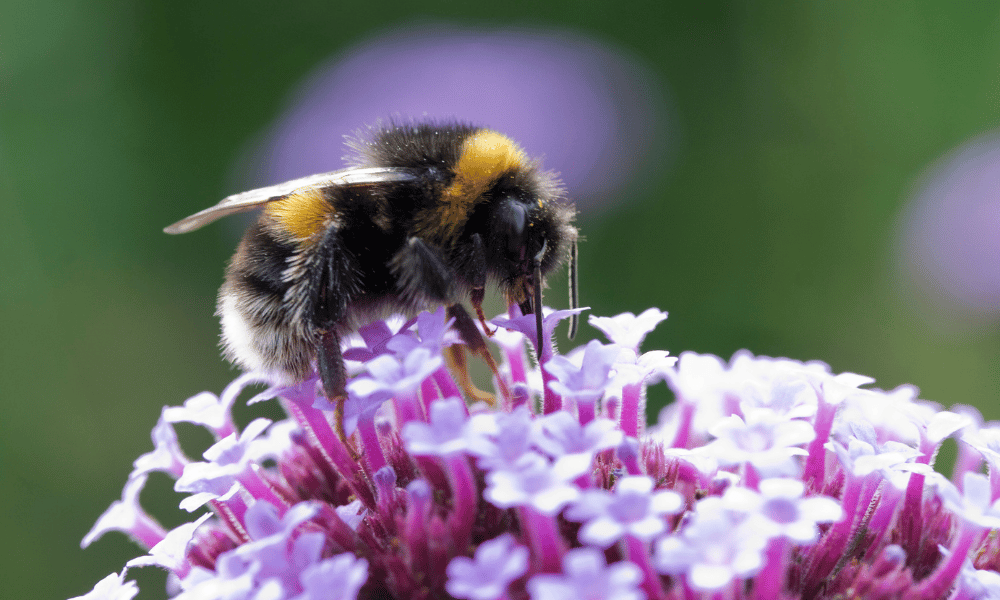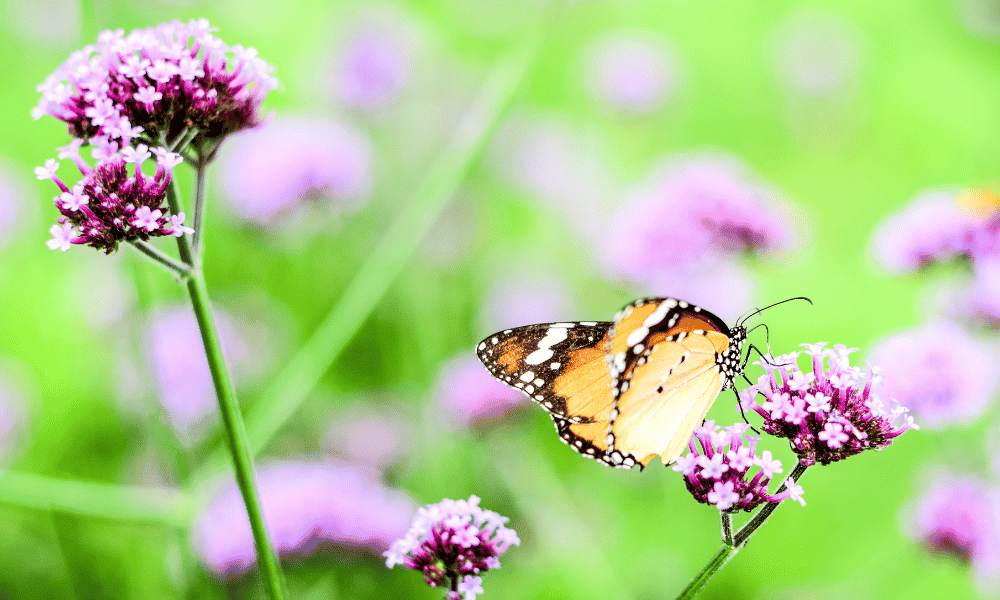While deciding what to plant in your garden, you’ll probably want to do all you can to draw in butterflies. Verbena plants tend to be tall, vibrant clumps of flowers that pollinators love. But, are butterflies attracted to Verbena Bonariensis too?
Yes, butterflies are attracted to verbena bonariensis. Growing multiple Verbena Bonariensis plants is a sure-fire way to increase the number of butterflies in your garden.
What Else Does Verbena Bonariensis Attract?
These beautiful, unique, clusters of flowers attract more than just butterflies. Pollinators can’t get enough of Verbena Bonariensis plants.
Bumblebees, honeybees, hummingbirds, and even wasps can be found bounding between the tubular nectar-filled flowers of Verbena Bonariensis plants.
Bees and butterflies see colour differently than humans do. In fact, bees cannot see the colour red. It is well known that bees and butterflies are very attracted to purple flowers.
Experienced gardeners know that growing large amounts of purple and blue-hued flowers is the easiest way to attract more pollinators to your garden. Verbena Bonariensis plants are most famous for their bold purple blooms.

Want to Attract Butterflies to Your Garden?
We’ve Put Together an Ultimate Guide to Attracting Butterflies to Your Garden Including Our Top 11 Plants You NEED to Start Growing Today:
Why Do Butterflies Like Verbena Bonariensis?
Verbena Bonariensis plants bloom into beautiful clumps of tiny tubular-shaped flowers. Each of these flowers is filled with sweet nectar that butterflies and other pollinators can’t get enough of!
Monarch butterflies are a common patron of these flowers. If you are hoping to increase the number of bright orange wings fluttering through your garden, plant milkweed in your garden alongside the Verbena Bonariensis plants.
Milkweed is the only food for Monarch caterpillars and adult monarch butterflies will choose to lay their eggs where there is an abundance of milkweed plants.
Honeybees will frequent these plants to help gather nectar and pollen to take back to their hives. Honeybees have specially designed pollen sacs on their back legs that allow them to gather more pollen than any other insect at one time.
They will spend all day buzzing from flower to flower to gather pollen and nectar. The multiple flowers on each clump of flowers allow a honeybee to gather lots of nectar and pollen without flying far.
You’ll often find that one Verbena Bonariensis plant is covered in a range of pollinators all at once with butterflies, bees and hoverflies all dancing around each other.
Is Verbena Bonariensis Easy to Grow?
Even though Verbena Bonariensis is mostly grown as an annual throughout the United States and zones that have cold weather, they are considerably easy to grow and maintain year after year.
Verbena Bonariensis reseeds fairly easily and can regrow year after year. These plants also tend to “wander” or spread throughout your garden, but this can easily be contained by pulling up new plants as they emerge.
If this is your first year growing Verbena Bonariensis in your butterfly garden, choosing adolescent or mature plants from a nursery or neighbour is a much better approach.
Growing these plants from seeds is a lengthy and time-consuming process and it cuts down on the amount of bloom time for the plant in your garden during that first year.
Starting seeds early in a greenhouse or indoor sunroom is also an option that will help provide an extended bloom season.
Planting Verbena Bonariensis along with other flowering perennials and annuals will create dimension and add colour to your landscape.
Since these plants have a long bloom season, their beautiful clumps of flowers will add pops of colour even as the other plants die out. Verbena Bonariensis are “see-through” plants, with clumps of flowers dotting along a thin stem. This unique bloom makes for a beautiful butterfly garden.
Yes, Verbena Bonariensis is a prolific self-seeder. In fact, you’ll find it popping up all over your garden during the following years. It will begin to spread seeds in Autumn when the flowers dry.
Yes, Verbena Bonariensis will come back each and every year. This year’s growth will die with new shoots emerging from the base. When you see the new growth in Spring, cut back the old growth.
Summary
Verbena Bonariensis plants make a great addition to your garden as butterflies are attracted to Verbena Bonariensis. These plants bloom clusters of flowers on thin stems and attract hundreds of butterflies and other pollinators every season.
Not only are these plants beautiful to look at, but they also have a long bloom season, which allows your garden to be a haven for pollinators from early spring to late fall.
Butterflies and bees love to feed off of Verbena Bonariensis plants thanks to their abundance of sweet nectar and multiple blooms in one cluster. The tubular shape of each flower allows the butterfly to have easy access to nectar and pollen without extra work.
Growing Verbena Bonariensis plants in your garden is easy. Even though these plants are annual in many parts of the United States and colder regions worldwide, Verbena Bonariensis is very good at reseeding itself after each season and will continue to spread through your yard fairly quickly.
Verbena Bonariensis plants are the perfect plant to grow for an abundance of butterflies. With their long growing season, butterflies can find food easily and when other food sources may be scarce. Not only are these plants beautiful to look at, but you can also help pollinators!







